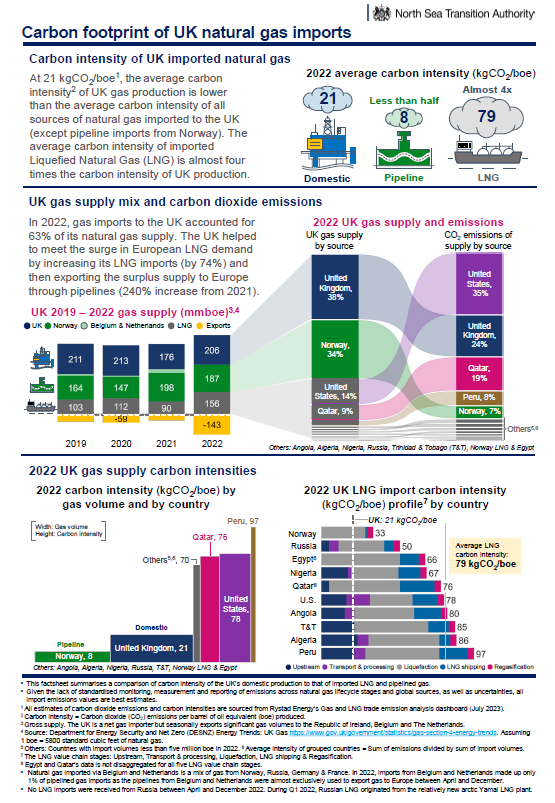
The NSTA published analysis in July 2023 comparing the carbon intensity of producing United Kingdom Continental Shelf (UKCS) gas with importing liquefied natural gas (LNG).
The analysis shows that the carbon intensity of producing gas domestically is on average almost four times lower compared with importing gas in LNG form. This is because of both the way the gas is transferred and, in some cases, the methods of extraction.
In particular the analysis shows that gas extracted from the UKCS has an average production emissions intensity of 21 kgCO2/boe; whereas imported LNG has a significantly higher average intensity of 79 kgCO2/boe by the time it reaches the UK point of consumption.
The process of liquefaction, combined with the emissions produced by the transportation and regasification of the LNG once in the UK, are responsible for the considerably higher emissions intensity.
The UK imported 63% of natural gas supply in 2022.
The results of the analysis are shown in the fact sheet below and can also be viewed here.

Image Description
